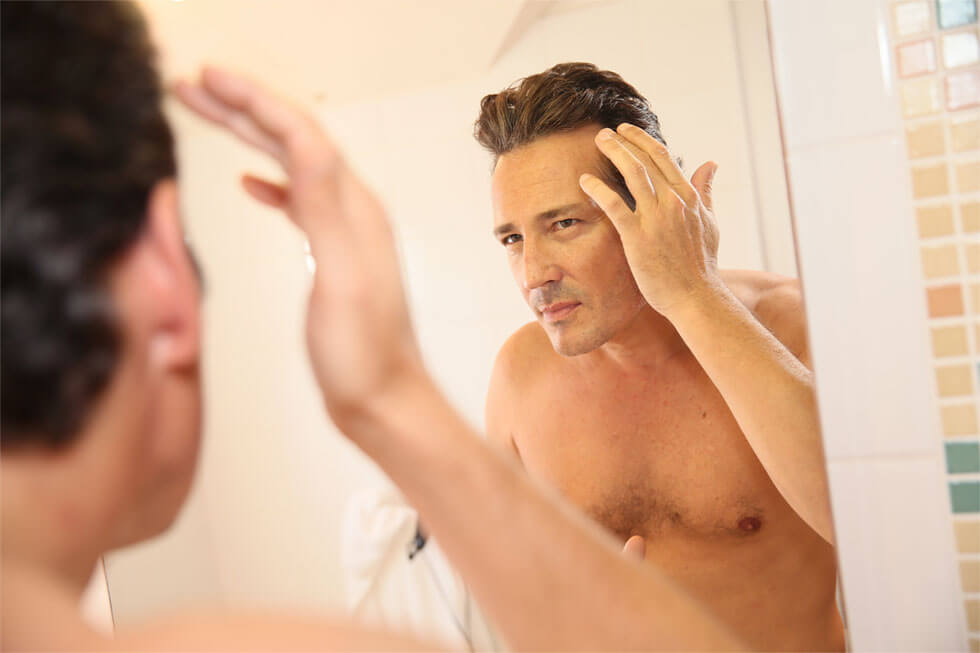Hair’s life cycle involves phases like anagen, catagen, and telogen, influencing its growth and shedding.
Hormonal imbalances, notably DHT and cortisol, disrupt the natural hair development cycle, leading to hair loss.
Genetics, hormonal fluctuations, and sensitivity to DHT contribute to male pattern baldness.
Effective treatments include minoxidil, finasteride, and advanced hair transplantation techniques.
Natural remedies, nutrition, and holistic therapies offer alternative solutions for combating hair loss.
Maintaining optimal hair health involves proper care habits, scalp massages, and protective hairstyles.
Decoding the Science of Male Hair Loss
Unlocking the secrets behind male hair loss requires delving into the intricacies of the hair growth process and the factors that can interrupt this natural rhythm. The hair growth cycle comprises three phases: anagen, catagen, and telogen.
Understanding the Hair Growth Cycle
During the anagen phase, hair follicles produce new cells, determining hair length over 2-7 years. The catagen phase is a brief transition, shrinking follicles for 2-3 weeks, while the telogen phase is a 2-4 month resting period, leading to old hair shedding for new growth.
Disruptors of the Hair Growth Cycle
Various factors can disturb the hair growth cycle, with hormonal imbalance being a primary culprit. Dihydrotestosterone (DHT), a byproduct of testosterone, attaches to follicles, altering their growth cycle. Cortisol, the stress hormone, can also disrupt hair growth, emphasizing the need for stress management.
Genetics and the Male Pattern Baldness Puzzle
Male pattern baldness, influenced by genetics, showcases a receding hairline and crown thinning. A combination of hormonal imbalances and follicle sensitivity to DHT contributes to this common condition.
Effective Treatments for Male Hair Loss
Multiple combat hair loss treatment for men ranging from topical solutions to surgical interventions.
Topical Solutions and Medications
Minoxidil, available in various forms, stimulates hair growth and enhances blood circulation. Finasteride, an oral medication, inhibits DHT production, slowing hair loss and encouraging regrowth.
Oral Medications for Hair Loss
Beyond finasteride, other oral medications like dutasteride and spironolactone may be prescribed to combat hair loss. Consulting a healthcare professional is crucial before starting any oral regimen.
Hair Transplantation Techniques
Surgical interventions, like hair transplantation, involve relocating follicles from one body area to areas experiencing hair loss. Techniques like follicular unit transplantation (FUT) and follicular unit extraction (FUE) offer permanent and natural-looking results.
Exploring Alternative Approaches to Hair Loss
In addition to conventional treatments, alternative approaches emphasize natural remedies, nutrition, and holistic therapies.
Harnessing Natural Remedies
Centuries-old natural remedies, including essential oils, herbal supplements, and scalp massages, promote hair growth. Essential oils like rosemary and lavender, along with herbal supplements like saw palmetto, offer potential benefits.
Nutrition’s Impact on Hair Health
A well-rounded diet rich in essential nutrients, including vitamins A, C, D, E, B vitamins, zinc, and iron, is vital for robust hair growth. Hydration and limiting processed foods further support healthy hair.
Holistic Therapies for Hair Growth
Holistic approaches such as acupuncture, meditation, and yoga contribute to overall well-being, positively impacting hair growth. Stress management, exercise, and sufficient sleep are integral components.
Preserving Hair Health: Daily Habits and Protective Styles
Preventing hair loss extends beyond treatments, involving daily care habits and protective measures.
Careful Hair Care Practices
Regular, gentle hair washing and conditioning are crucial. Avoid harsh shampoos and excessive heat styling, opting for sulfate-free products and minimal heat usage.
Scalp Massage Techniques
Daily scalp massages, with or without essential oils, enhance blood circulation, stimulate follicles, and reduce stress. Incorporating essential oils like rosemary amplifies massage benefits.
Protective Hairstyles for Hair Preservation
Styles like braids, twists, and buns shield hair from environmental stressors, minimizing breakage. Striking a balance between protection and maintaining hair health is essential, avoiding overly tight styles.
In conclusion, battling male hair loss requires a multifaceted approach, from understanding the science behind it to exploring alternative treatments and adopting healthy hair care practices. This comprehensive strategy addresses the root causes of hair loss, fostering a path toward robust and sustainable hair growth.
